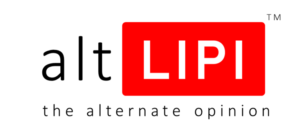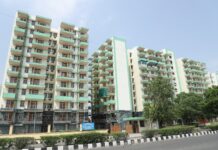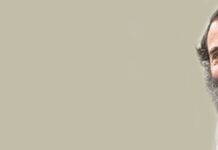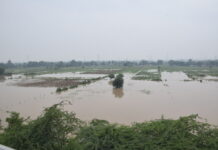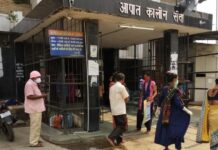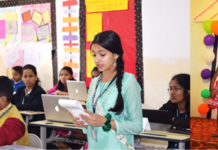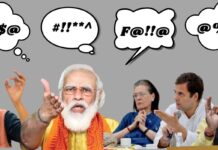[vc_row][vc_column][vc_column_text]
If we have any more trouble in store for us post-pandemic we never know. But while the world is still grappling with the herculean challenges in the second year into the covid-19 epidemic amidst discovery of new and more virulent variants of the virus and over-stretched healthcare system there is much that lay unattended which might pose bigger problems for the post-pandemic world to deal with.
According to the UNESCO, education or learning loss could be the biggest challenge for the post-pandemic world and it would be important to see “how education system can remediate lost learning due to disruption caused by covid-19”.
“The impact is going to be worse,” claim the teachers and academics with over a year of experience of teaching in times of the health emergency.
The UNESCO, on its part, had foresaw in 2020 remediating learning loss due to covid as a major challenge with about 1.6 billion children affected by the closure of schools around the world. But after more than a year of handling education during the pandemic, Mitu Basu, principal of a model government school at a village in Faizabad district in Uttar Pradesh, emphasised that the problem is much bigger than what it was thought to be. “It is not only the learning loss which we as educators are witnessing but absolute disorientation from school and education among students we will have to deal with,” she said.
“The learning loss will be very difficult to make up for. At a time when people are confronted with a constant struggle for survival and daily needs, it is tough to maintain the quest for education as a priority. The pandemic has irreparably damaged the cause of education in rural India,” pointed out Mitu.
The learning loss is not a phenomenon restricted to rural India. Digital divide and economic disparities have caused massive loss to learning in cities and metros as well. Existing data on the learning loss during prolonged school closures shows that covid19 could result in “students achieving only 70 percent of the learning gains as compared to a normal year. Lower grades are likely to suffer even greater loss. Even in classes where students have been able to access remote learning options, the learning loss is likely to be significant.”
The learning loss is a matter of grave concern for even the private schools and parents who had no digital disruption. With online education system well in place with teachers trained and students understanding the new online patters. Final results of first online examination have left private school administrations thinking about revisiting methods so that online education does not widen the learning gap.
Many a private school in cities like Delhi had organised orientation programmes for parents after the results of final examinations were in a shock to learn that most of the students were copy-pasting answers from Internet sources and the answer sheets were hardly a reflection on true knowledge of the students despite best of efforts from the schools to conduct fair online examinations.
Although every private school claims to have developed a high-end online education pattern with the teachers well trained and well equipped, they do not rule out learning loss. The learning loss is eventually going to manifest itself as a major challenge for them to tackle once physical schooling starts post pandemic.
“We really do not know what the student is actually learning. This is a daily struggle to device methods to keep the attention span intact and assess whether the children are actually learning through online lessons,” rued a worried vice-principal of a private school in South Delhi.
Schools complain that online examinations are no criterion to judge the knowledge of children as in the pursuit of gaining good marks students themselves, sometimes assisted by their parents, use multiple digital devices to copy-past answers from the Internet. “That is why it becames important to sensitise parents and students against copy-pasting so that they understand the grim reality of the learning loss which we might face in near future
impacting the academic performance and professional choices in future,” pointed out an education councelor.
Economic disparities and digital divide are the other factors resulting in massive learning loss even to urban children. Private schools which are legally bound to admit 25 per cent students from economically weaker sections (EWS) could not devise ways to track how these children were coping with online classes in the absence of mobile phones and gadgets like lap tops and desktops.
Despite courts’ intervention and government’s policies to provide laptops to students from EWS families, uninterrupted online classes were a challenge when many of these families had to struggle to manage even a single meal for the family due to job loss to the parents and economic blockades in the country due to lockdowns. Many of these school-going children had to stand in the queue for free rations and food when they were supposed to attend online lectures.
The digital divide is a bigger problem in rural India where every family is not equipped with even a smart phone. “Every day, we are devising methods to bring children to education. We have been making videos of lessons and sending across to the mobile phone numbers given to us by the students which not necessarily belong to their family. These could be the numbers of neighbours or relatives. We have had no means to guarantee if students have
access to these video lessons,” says Dipti Singh an educator in a village school.
According to UNESCO, Covidd 19 will exacerbate existing learning gap both between students and between schools. Students who face challenges will lag further behind especially those whose families have faced additional challenges. Gaps between schools reflect on the performance of teachers depending on the sizes of the classes they deal with. They face a challenge in following up with the students. Schools with weak IT systems may lose precious time in setting up platforms. In addition, gaps may widen between schools due to uneven patterns of school closure.
Learning setback caused by the school closures is predicted to have significant economic consequences too. Income of the country plays an important role in the use of technology in education. As per a UN report, as compared to 36 percent of low-income countries there are 74 per cent of lower-middle-income countries who use television programs in primary education.
According to the World Bank, globally a school shutdown for five months could generate learning losses that have a present value of US$10 trillion. By this measure, the world could stand to lose as much as 16 percent of the investments that a government make in this cohort of students’ basic education.
To counter this situation, drastic remedial actions will have to be incorporated by the schools and the education department. Students need to be supported in catching up with learning through a wide variety of means, including additional teaching time, focused content and specific pedagogy like compressed learning, accelerated learning.
However, one remedial model should not be made to fit all, emphasises Mitu. “In rural India, we are assessing how much is the loss and how much can we cope with. There are cases where the students of standard 8 need to be treated as a fresher. Can we make them sit with class one students? Such situations are aplenty. In such cases, we need a custom-made remedial policies so that individual learning loss could be bridged,” she pointed out.
[/vc_column_text][/vc_column][/vc_row]
Disclaimer: We do undertake rigorous checks on content provided by contributors before publishing the same. If you come across some factual errors, kindly bring this into our notice and we shall review your objection and claim as per our policy and display correction credits and corrections on the article itself.
The opinion expressed in the article is of the writer. Writer is a freelance journalist/journalist based in Delhi
